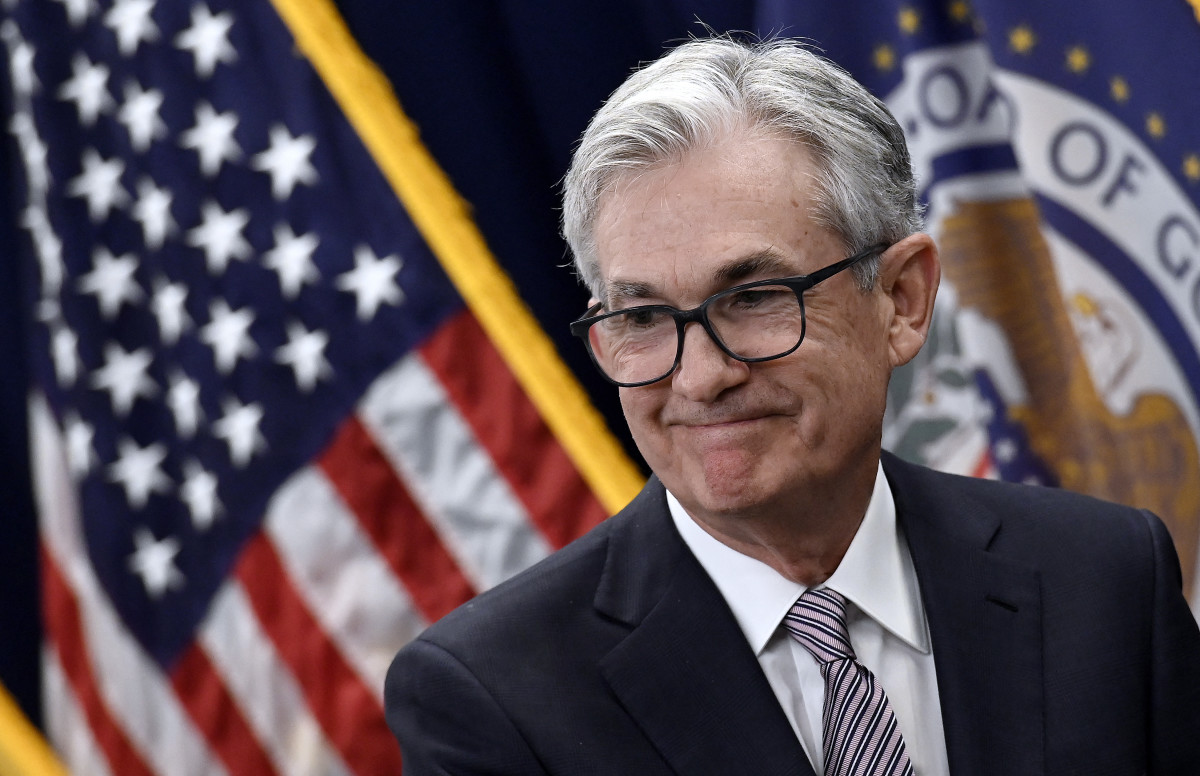
The Federal Reserve is widely expected to keep its benchmark lending rate unchanged when it wraps up its two-day policy meeting later today, but investors are likely to focus on an increasingly important component of the central bank's decision making.
Fed officials have carefully guided investors into this month's meeting, warning that sticky inflation pressures will keep headline price gains higher over the coming months. That's thanks in part to better-than-expected figures from the labor market and an economy that continues to defy forecasts that it would fall into recession.
Interest rate traders have responded, albeit somewhat reluctantly, by paring their expectations of an early spring interest rate cut and ruling out any chance of a reduction from the current federal-funds rate of 5.25% to 5.5% at Wednesday's meeting in Washington.
That consensus likely puts an even greater emphasis on the so-called dot plots, formally known as the Fed's Summary of Economic Projections, which are set to be released alongside the central bank's interest-rate decision at 2 pm Eastern Time.

TheStreet/Shutterstock
The projections are effectively a collection of the near-term forecasts for the federal-funds rate, based on estimates for growth, inflation and the job market, from the 19 members – including Chairman Jerome Powell – of the Fed's policy-making Federal Open Market Committee.
Dot Plot projections will be closely tracked
It's also worth noting that while 19 members contribute to the overall summary (seven Fed governors and 12 regional Fed Presidents), only 12 vote at any given Fed policy meeting.
The dots are also a forecast, not a commitment, and can and do change as a result of incoming economic data and broader financial market conditions.
Related: Retail sales rebound and factory inflation spikes, muddling Fed rate forecasts
Last December, the median forecast from the dot-plot summary pointed to the federal-funds rate falling by around 0.75 percentage point this year, a decline that would require three quarter-point rate cuts. The summary also called for a further percentage-point decline in 2025 and a final 0.75 percentage point of reductions in 2026.
Markets late last year keyed on those projections while adding a hefty bit of their own analysis along the way. Investors established bets that the Fed would cut rates at least four times, and possibly five, over the whole of 2024.
However, faster-than-expected inflation data, a robust job market and a resilient domestic economy have whittled those projections to three, according to CME Group's FedWatch, with the first likely to arrive at the Fed's policy meeting in June.
'We have a ways to go' on inflation: Fed's Powell
Fed officials now are warning that it could take much longer to bring inflation, usually defined by the Bureau of Economic Analysis' PCE Price Index, back to the central bank's preferred 2% target.
The most recent reading of the Fed's preferred gauge showed core prices eased to 2.8% in January, matching both Wall Street's forecast and the lowest reading since March 2021.
"We have a ways to go," Powell told reporters after the Fed's policy meeting in January. "Certainly we’re encouraged by the progress, but we’re not declaring victory at all at this point."
Since then, of course, inflation has quickened while global prices for commodities such as copper and oil, which are typically associated with firmer economic growth, have reached multimonth highs.
Bank of America's benchmark survey of global fund managers in fact suggests investors are the most bullish they've been on global-growth prospects in two years. They also see faster inflation as the market's biggest so-called tail risk, topping geopolitical and U.S. election concerns.
Related: Bond markets tell Fed rate story that tech-powered stocks still ignore
"While the bond market is still optimistic about a soft landing, it anticipates that inflation may persist above the Federal Reserve's 2% target for an extended period," said Althea Spinozzi, head of fixed-income strategy at Saxo Bank.
"Consequently, bond-futures markets are beginning to question the likelihood of the Federal Reserve delivering the three rate cuts projected in December's dot plot."
Lauren Goodwin, an economist and chief market strategist at New York Life Investments, notes that it will take forecast changes from only two Fed officials to lower the median dot-plot forecast to two rate cuts this year. But she still expects easing to begin in June.
"December’s dots looked very Goldilocks, reflecting a faster-than-expected disinflationary process and resilient labor market," she said. "We believe that core PCE inflation will continue to move lower, but remain sticky, and that the unemployment rate will continue to rise.
"The result is that key macro data balance each other, allowing the Fed to begin and continue cutting as of June," she added.
Cash isn't king but it's rising fast
The full functional impact of the Fed waiting until, say, late July as opposed to early June before executing its first rate cut is largely de minimis. But the optics are far more significant.
A Fed willing to hold off until July, while potentially forecasting fewer rate cuts for this year and next, has a greater degree of confidence in the broader economy but a lot more concern about elevated inflation.
That could lead to what bond traders call a bear-flattening of the yield curve, where short-term yields (which are tied to interest-rate risks) rise faster than longer-term rates.
A benchmark 6-month Treasury bill, which holds no inherent risk, would suddenly look very attractive at a near 5.5% yield when compared with the paltry dividend yield of the S&P 500, which currently trades at around 1.35%.
Bank of America's Fund Manager Survey, meanwhile, notes that investors are the most exposed to stocks in two years, but are slowly adding to cash reserves at the same time.
More Economy:
- Fed members just hat-tipped what's next for interest rates
- Retail sales tumble clouds impact of inflation data
- Jobs report shocker: 353,000 hires crush forecasts, stokes inflation fears
A hawkish Fed paired with slower earnings growth and a stock market that's lopsided by gains from only the biggest tech companies could suddenly make bonds look even more valuable.
"The stock market's significant gains so far this year suggest that Fear of Missing Out, or FOMO, is alive and well," said Carol Schleif, chief investment officer at BMO Family Office. "Cash isn't quite so comfy anymore with the growing belief that the Fed will soon cut interest rates, making cash less attractive than stocks."
"But the glide path to the Fed’s 2% inflation target is anything but smooth and the final mile to the finish line is likely to take some time and a lot more data to gauge its progress," she added.
"We wouldn’t be shocked to see that delayed to later in the year if the data continues to come in hot as recent data has."
Related: Veteran fund manager picks favorite stocks for 2024






